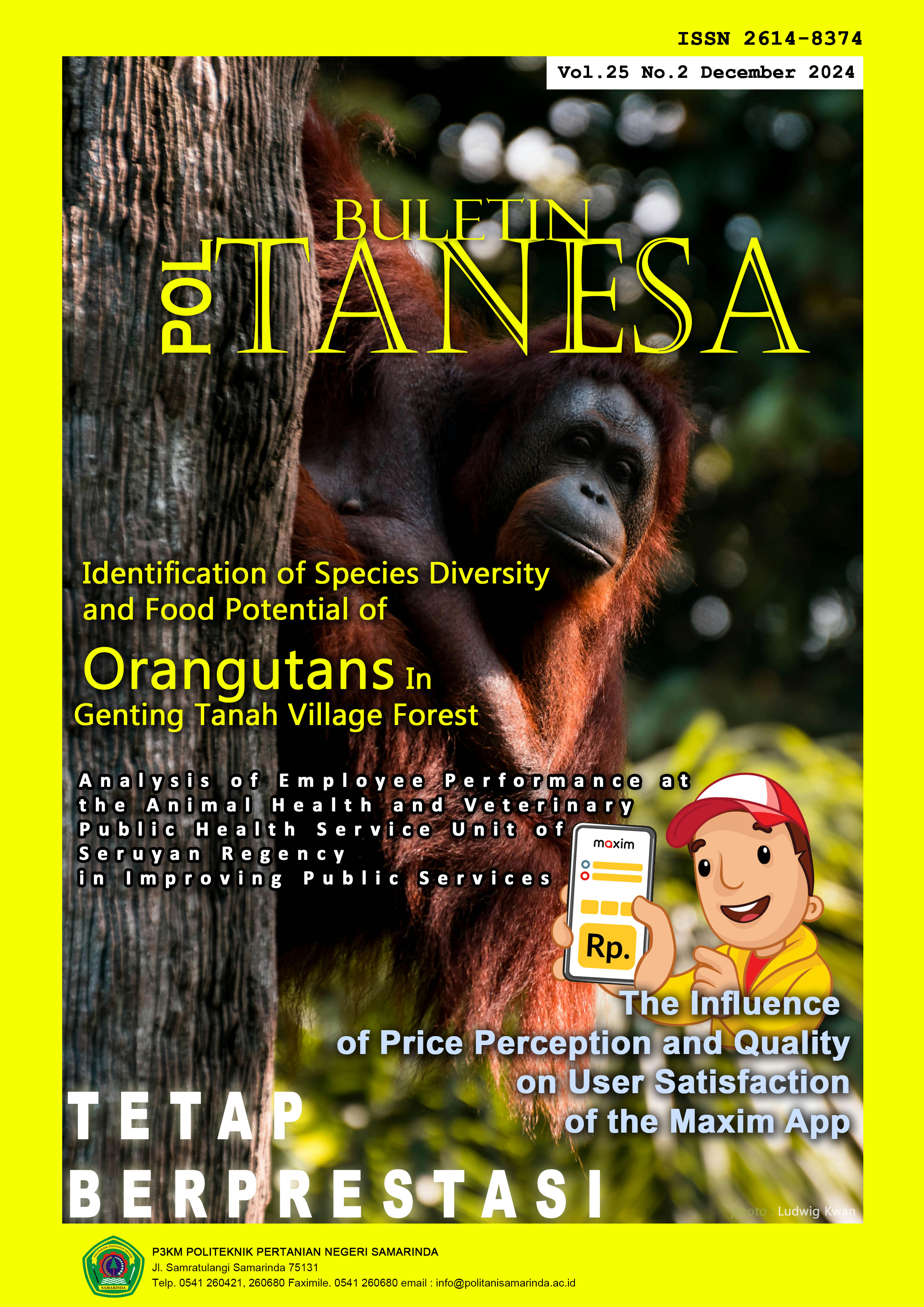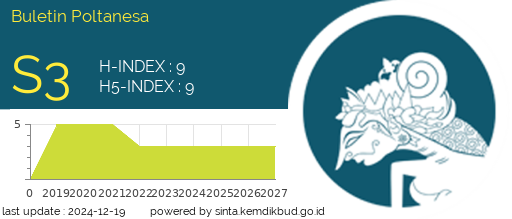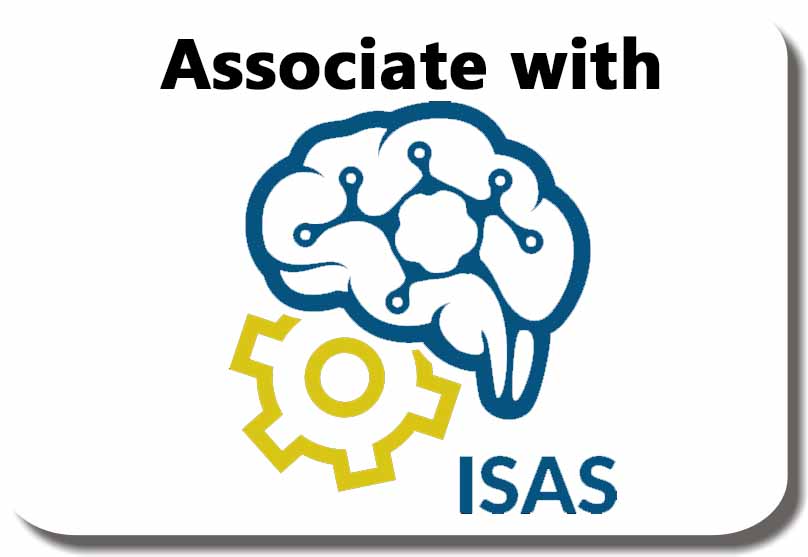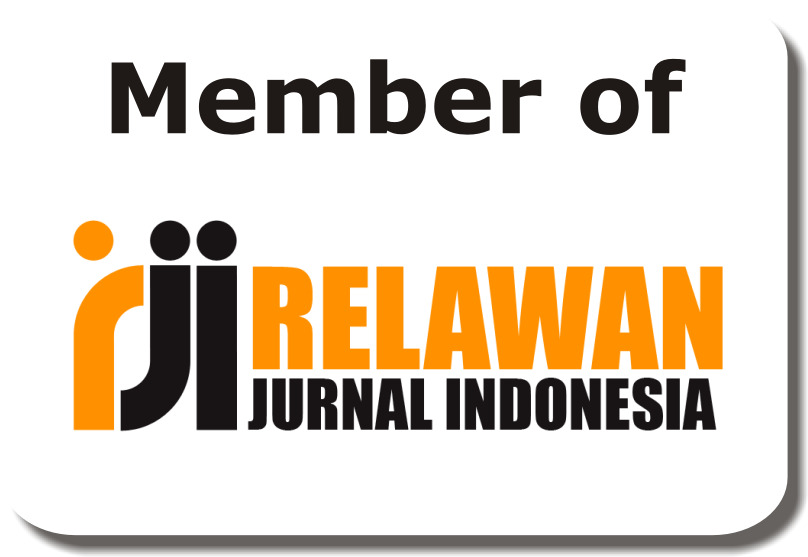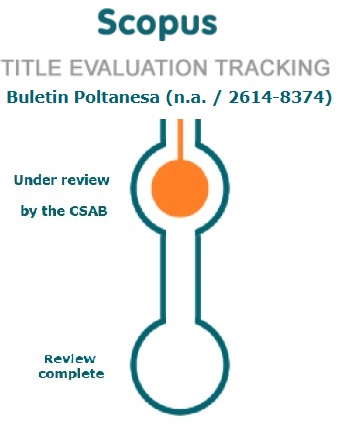Training and Utilization of Geographic Information Systems at Rahmatullah Lempake Samarinda Islamic Boarding School
DOI:
https://doi.org/10.51967/tanesa.v25i2.3158Keywords:
Observation, Information Technology, Interview, InsightsAbstract
The application of Geographic Information System (GIS) technology in education is becoming increasingly vital for enhancing digital literacy and spatial analysis skills. Rahmatullah Lempake Islamic Boarding School in Samarinda is one of the educational institutions with significant potential to utilize this technology in supporting the management of its environment and local resources. The initiative aims to provide students with training in GIS, enhancing their knowledge and skills in spatial data management and geographic analysis. The training employed a combination of lectures, discussions, and practical sessions using GIS software. It was attended by students aged 12 to 15 and covered foundational topics, such as an introduction to GIS, mapping applications, and data analysis techniques. The results of this training demonstrated a notable improvement in the students' understanding and basic GIS skills, as well as increased awareness of the technology's potential applications in their local environment. The integration of GIS into the educational process offers significant benefits, particularly in enhancing students' technological literacy and spatial analysis capabilities, which can be applied to environmental management activities within the Islamic boarding school. In conclusion, the GIS training at Rahmatullah Lempake Islamic Boarding School has effectively developed the students' foundational skills in technology and geographic analysis, offering practical benefits for future resource management and environmental planning endeavors.
References
Ahmed, H. G. I., Mohamed, M. H., & Saleh, S. S. (2021). A GIS model for exploring the water pumped storage locations using remote sensing data. Egyptian Journal of Remote Sensing and Space Science, 24(3), 515–523. https://doi.org/10.1016/j.ejrs.2021.09.006
Al-Bahrani, H. S., Al-Rammahi, A. H., Al-Mamoori, S. K., Al-Maliki, L. A., & AL-Ansari, N. (2022). Groundwater detection and classification using remote sensing and GIS in Najaf, Iraq. Groundwater for Sustainable Development, 19, 100838. https://doi.org/10.1016/j.gsd.2022.100838
Aljenaid, S., Abido, M., Redha, G. K., AlKhuzaei, M., Marsan, Y., Khamis, A. Q., Naser, H., AlRumaidh, M., & Alsabbagh, M. (2022). Assessing the spatiotemporal changes, associated carbon stock, and potential emissions of mangroves in Bahrain using GIS and remote sensing data. Regional Studies in Marine Science, 52. https://doi.org/10.1016/j.rsma.2022.102282
Alqahtany, A. (2023). GIS-based assessment of land use for predicting increase in settlements in Al Ahsa Metropolitan Area, Saudi Arabia for the year 2032. Alexandria Engineering Journal, 62, 269–277. https://doi.org/10.1016/j.aej.2022.07.020
Bedair, S., Sayed, S. A., & AlMetwaly, W. M. (2022). Enhancing Hybrid Learning using Open Source GIS-Based Maps Archiving System. Egyptian Journal of Remote Sensing and Space Science, 25(3), 779–793. https://doi.org/10.1016/j.ejrs.2022.07.003
Çetinkaya, C., Erbaş, M., Kabak, M., & Özceylan, E. (2022). A mass vaccination site selection problem: An application of GIS and entropy-based MAUT approach. Socio-Economic Planning Sciences. https://doi.org/10.1016/j.seps.2022.101376
Chowdhury, M. S., & Hafsa, B. (2022). Multi-decadal land cover change analysis over Sundarbans Mangrove Forest of Bangladesh: A GIS and remote sensing based approach. Global Ecology and Conservation, 37. https://doi.org/10.1016/j.gecco.2022.e02151
Chukwuma, E. C., Okonkwo, C. C., Ojediran, J. O., Anizoba, D. C., Ubah, J. I., & Nwachukwu, C. P. (2021). A Gis Based Flood Vulnerability Modelling Of Anambra State Using An Integrated Ivfrn-Dematel-Anp Model. Heliyon, 7(9). https://doi.org/10.1016/j.heliyon.2021.e08048
Desalegn, H., & Mulu, A. (2021). Mapping flood inundation areas using GIS and HEC-RAS model at Fetam River, Upper Abbay Basin, Ethiopia. Scientific African, 12. https://doi.org/10.1016/j.sciaf.2021.e00834
Dhinsa, D., Tamiru, F., & Tadesa, B. (2022). Groundwater potential zonation using VES and GIS techniques: A case study of Weserbi Guto catchment in Sululta, Oromia, Ethiopia. Heliyon, 8(8). https://doi.org/10.1016/j.heliyon.2022.e10245
El-Hadidy, S. M., & Morsy, S. M. (2022). Expected spatio-temporal variation of groundwater deficit by integrating groundwater modeling, remote sensing, and GIS techniques. Egyptian Journal of Remote Sensing and Space Science, 25(1), 97–111. https://doi.org/10.1016/j.ejrs.2022.01.001
Elbeih, S. F. (2021). Evaluation of agricultural expansion areas in the Egyptian deserts: A review using remote sensing and GIS. In Egyptian Journal of Remote Sensing and Space Science (Vol. 24, Issue 3P2, pp. 889–906). Elsevier B.V. https://doi.org/10.1016/j.ejrs.2021.10.004
Elboshy, B., Alwetaishi, M., M. H. Aly, R., & Zalhaf, A. S. (2022). A suitability mapping for the PV solar farms in Egypt based on GIS-AHP to optimize multi-criteria feasibility. Ain Shams Engineering Journal, 13(3). https://doi.org/10.1016/j.asej.2021.10.013
Erdem, F., Atun, R., Yigit Avdan, Z., Atila, I., & Avdan, U. (2021). Drought analysis of Van Lake Basin with remote sensing and GIS technologies. Egyptian Journal of Remote Sensing and Space Science, 24(3), 1093–1102. https://doi.org/10.1016/j.ejrs.2021.10.006
Ghoneim, S. M., Yehia, M. A., Salem, S. M., & Ali, H. F. (2022). Integrating remote sensing data, GIS analysis and field studies for mapping alteration zones at Wadi Saqia area, central Eastern Desert, Egypt. Egyptian Journal of Remote Sensing and Space Science, 25(1), 323–336. https://doi.org/10.1016/j.ejrs.2022.02.001
Gupta, L., Agrawal, N., Dixit, J., & Dutta, S. (2022). A GIS-based assessment of active tectonics from morphometric parameters and geomorphic indices of Assam Region, India. Journal of Asian Earth Sciences: X, 8. https://doi.org/10.1016/j.jaesx.2022.100115
Gürtekin, E., & Gökçe, O. (2021). Estimation of erosion risk of Harebakayiş sub-watershed, Elazig, Turkey, using GIS based RUSLE model. Environmental Challenges, 5. https://doi.org/10.1016/j.envc.2021.100315
Isihak, S., Akpan, U., & Bhattacharyya, S. (2022). Evolution of GIS-based rural electrification planning models and an application of OnSSET in Nigeria. Renewable and Sustainable Energy Transition, 2, 100019. https://doi.org/10.1016/j.rset.2022.100019
Khalil, N., Mhanna, M., & Assaf, E. H. (2021). Horizontal corridor optimization of highway using GIS & CFSC method in mountainous areas. Egyptian Journal of Remote Sensing and Space Science, 24(3), 509–514. https://doi.org/10.1016/j.ejrs.2021.08.008
Kumar, M., Singh, P., & Singh, P. (2022). Integrating GIS and remote sensing for delineation of groundwater potential zones in Bundelkhand Region, India. Egyptian Journal of Remote Sensing and Space Science, 25(2), 387–404. https://doi.org/10.1016/j.ejrs.2022.03.003
Larkin, A., Gu, X., Chen, L., & Hystad, P. (2021). Predicting perceptions of the built environment using GIS, satellite and street view image approaches. Landscape and Urban Planning, 216. https://doi.org/10.1016/j.landurbplan.2021.104257
Li, S., Zhang, M., Yuan, F., Li, X., Wang, C., Long, J., & Jiao, J. (2022). Isotope spatiotemporal analysis and prospecting indication based on GIS in Tibet. Ore Geology Reviews, 147. https://doi.org/10.1016/j.oregeorev.2022.104997
Li, W., Winter, P. L., Milburn, L. A., & Padgett, P. E. (2021). A dual-method approach toward measuring the built environment - sampling optimization, validity, and efficiency of using GIS and virtual auditing. Health and Place, 67. https://doi.org/10.1016/j.healthplace.2020.102482
Liu, H., Zhang, Z., Chen, T., Yang, J., Li, Q., & He, D. (2021). Simplified Modelling of Transient Ground Potential Rise of GIS in Ultra-high-voltage Substations with Hybrid Reactive Power Compensation. Electric Power Systems Research, 199. https://doi.org/10.1016/j.epsr.2021.107441
Liu, Q., Zhai, G., & Lu, X. (2021). Integrated land-sea surveying and mapping of intertidal zone based on high-definition remote sensing images and GIS technology. Microprocessors and Microsystems, 82. https://doi.org/10.1016/j.micpro.2021.103937
Lumbreras, M., Diarce, G., Martin-Escudero, K., Campos-Celador, A., & Larrinaga, P. (2022). Design of district heating networks in built environments using GIS: A case study in Vitoria-Gasteiz, Spain. Journal of Cleaner Production, 349. https://doi.org/10.1016/j.jclepro.2022.131491
Massano, M., Macii, E., Lanzini, A., Patti, E., & Bottaccioli, L. (2022). A GIS Open-Data Co-Simulation Platform for Photovoltaic Integration in Residential Urban Areas. Engineering. https://doi.org/10.1016/j.eng.2022.06.020
Murugesan, M., Venkatesan, P., Kumar, S., Thangavelu, P., Rose, W., John, J., Castro, M., Manivannan, T., Mohan, V. R., & Rupali, P. (2022). Epidemiological investigation of the COVID-19 outbreak in Vellore district in South India using Geographic Information Surveillance (GIS). International Journal of Infectious Diseases, 122, 669–675. https://doi.org/10.1016/j.ijid.2022.07.010
Pepe, M., Costantino, D., Alfio, V. S., Restuccia, A. G., & Papalino, N. M. (2021). Scan to BIM for the digital management and representation in 3D GIS environment of cultural heritage site. Journal of Cultural Heritage, 50, 115–125. https://doi.org/10.1016/j.culher.2021.05.006
Quan, S. J., & Bansal, P. (2021). A systematic review of GIS-based local climate zone mapping studies. In Building and Environment (Vol. 196). Elsevier Ltd. https://doi.org/10.1016/j.buildenv.2021.107791
Taloor, A. K., Adimalla, N., & Goswami, A. (2021). Remote Sensing and GIS applications in Geoscience. Applied Computing and Geosciences, 11. https://doi.org/10.1016/j.acags.2021.100065
Tamiru, H., & Wagari, M. (2021). Evaluation of data-driven model and GIS technique performance for identification of Groundwater Potential Zones: A case of Fincha Catchment, Abay Basin, Ethiopia. Journal of Hydrology: Regional Studies, 37. https://doi.org/10.1016/j.ejrh.2021.100902
Turek, T., & Stepniak, C. (2021). Areas of integration of GIS technology and smart city tools. Research findings. Procedia Computer Science, 192, 4681–4690. https://doi.org/10.1016/j.procs.2021.09.246
Villacreses, G., Martínez-Gómez, J., Jijón, D., & Cordovez, M. (2022). Geolocation of photovoltaic farms using Geographic Information Systems (GIS) with Multiple-criteria decision-making (MCDM) methods: Case of the Ecuadorian energy regulation. In Energy Reports (Vol. 8, pp. 3526–3548). Elsevier Ltd. https://doi.org/10.1016/j.egyr.2022.02.152
Wu, X., Xu, C., Xu, X., Chen, G., Zhu, A., Zhang, L., Yu, G., & Du, K. (2022). A Web-GIS hazards information system of the 2008 Wenchuan Earthquake in China. Natural Hazards Research. https://doi.org/10.1016/j.nhres.2022.03.003
Xiao, Y., Yan, Y., Yu, Y. S., Wang, B., & Liang, Y. H. (2022). Research on pose adaptive correction method of indoor rail mounted inspection robot in GIS Substation. Energy Reports, 8, 696–705. https://doi.org/10.1016/j.egyr.2022.03.155
Yousef, G. A., Elazony, M. A., Abdelsattar, A., Sewailam, M. M., & Elsaid, O. H. (2022). Applying an integrated Remote Sensing-GIS approach in the documentation of handicraft centers at New Valley Governorate, Egypt. Egyptian Journal of Remote Sensing and Space Science, 25(3), 731–739. https://doi.org/10.1016/j.ejrs.2022.04.004
Yudhana, A., Sulistyo, D., & Mufandi, I. (2021). GIS-based and Naïve Bayes for nitrogen soil mapping in Lendah, Indonesia. Sensing and Bio-Sensing Research, 33. https://doi.org/10.1016/j.sbsr.2021.100435
Zhang, S., Liu, X., Li, R., Wang, X., Cheng, J., Yang, Q., & Kong, H. (2021). AHP-GIS and MaxEnt for delineation of potential distribution of Arabica coffee plantation under future climate in Yunnan, China. Ecological Indicators, 132. https://doi.org/10.1016/j.ecolind.2021.108339
Downloads
Published
How to Cite
Issue
Section
License
Copyright (c) 2024 Buletin Poltanesa

This work is licensed under a Creative Commons Attribution-ShareAlike 4.0 International License.
The copyright of this article is transferred to Buletin Poltanesa and Politeknik Pertanian Negeri Samarinda, when the article is accepted for publication. the authors transfer all and all rights into and to paper including but not limited to all copyrights in the Buletin Poltanesa. The author represents and warrants that the original is the original and that he/she is the author of this paper unless the material is clearly identified as the original source, with notification of the permission of the copyright owner if necessary.
A Copyright permission is obtained for material published elsewhere and who require permission for this reproduction. Furthermore, I / We hereby transfer the unlimited publication rights of the above paper to Poltanesa. Copyright transfer includes exclusive rights to reproduce and distribute articles, including reprints, translations, photographic reproductions, microforms, electronic forms (offline, online), or other similar reproductions.
The author's mark is appropriate for and accepts responsibility for releasing this material on behalf of any and all coauthor. This Agreement shall be signed by at least one author who has obtained the consent of the co-author (s) if applicable. After the submission of this agreement is signed by the author concerned, the amendment of the author or in the order of the author listed shall not be accepted.

